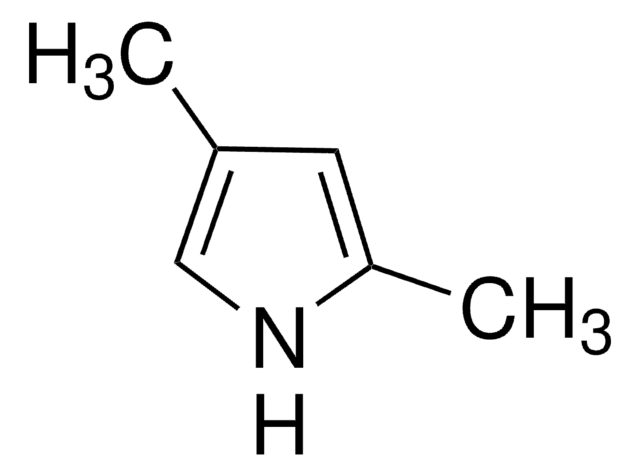746169
Difluoro(4-(1,1-dimethylethyl)-2-{1-[4-(1,1-dimethylethyl)-3,5-dimethyl-2H-pyrrol-2-ylidene-N]ethyl}-3,5-dimethyl-1H-pyrrol-2-ylidene-N]ethyl}-3,5-dimethyl-1H-pyrrolato-N)boron
98% (HPLC)
Synonym(s):
Boron,[4-(1,1-dimethylethyl)-2-[1-[4-(1,1-dimethylethyl)-3,5-dimethyl-2H-pyrrol-2-ylidene]ethyl]-3,5-dimethyl-1H-pyrrolato-N1,N2]difluoro-, PM 570, PM 596, PM 597, Pyrromethene 570, Pyrromethene 596, Pyrromethene 597
About This Item
Recommended Products
Assay
98% (HPLC)
form
powder
mp
256-261 °C
λmax
526 nm in dichloromethane
SMILES string
CC(C1=C(C)C(C(C)(C)C)=C(C)N1B(F)2F)=C3[N]2=C(C)C(C(C)(C)C)=C3C
InChI
1S/C22H33BF2N2/c1-12-17(21(6,7)8)15(4)26-19(12)14(3)20-13(2)18(22(9,10)11)16(5)27(20)23(26,24)25/h1-11H3
InChI key
SEHGNHOGQDPQRC-UHFFFAOYSA-N
Related Categories
General description
Application
Also used for solid-state dye laser devices and organic solar cells.
Storage Class Code
11 - Combustible Solids
WGK
WGK 3
Flash Point(F)
Not applicable
Flash Point(C)
Not applicable
Certificates of Analysis (COA)
Search for Certificates of Analysis (COA) by entering the products Lot/Batch Number. Lot and Batch Numbers can be found on a product’s label following the words ‘Lot’ or ‘Batch’.
Already Own This Product?
Find documentation for the products that you have recently purchased in the Document Library.
Customers Also Viewed
Our team of scientists has experience in all areas of research including Life Science, Material Science, Chemical Synthesis, Chromatography, Analytical and many others.
Contact Technical Service
![Difluoro{2-[1-(3,5-dimethyl-2H-pyrrol-2-ylidene-N)ethyl]-3,5-dimethyl-1H-pyrrolato-N}boron 99% (HPLC)](/deepweb/assets/sigmaaldrich/product/structures/196/394/4c2c0eae-f749-44bf-a37b-84bf0226092e/640/4c2c0eae-f749-44bf-a37b-84bf0226092e.png)
![Difluoro{2-[(3,5-dimethyl-2H-pyrrol-2-ylidene-N)methyl]-3,5-dimethyl-1H-pyrrolato-N}boron 99% (HPLC)](/deepweb/assets/sigmaaldrich/product/structures/518/861/c19c64be-654e-472e-a069-30ffccb1a8cd/640/c19c64be-654e-472e-a069-30ffccb1a8cd.png)







